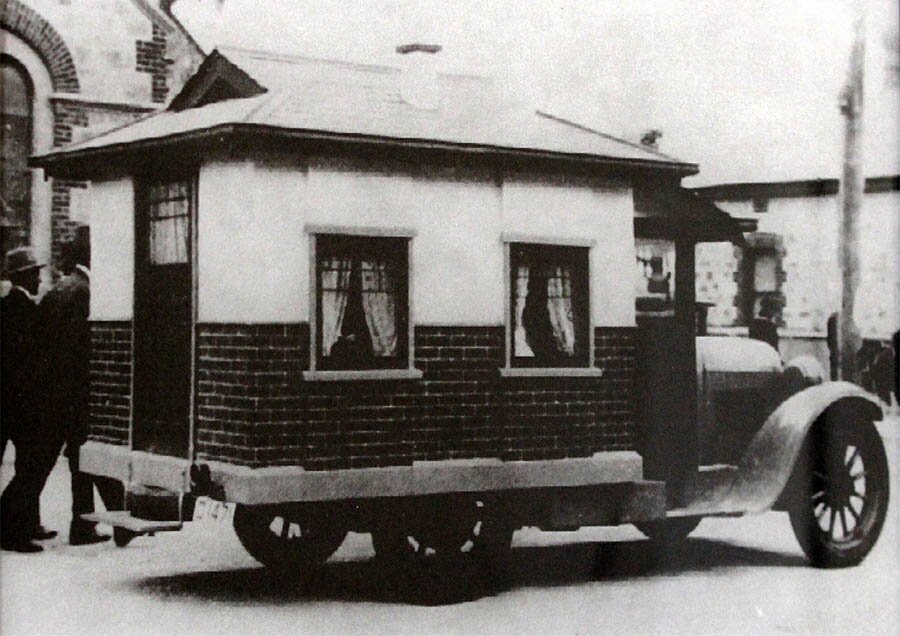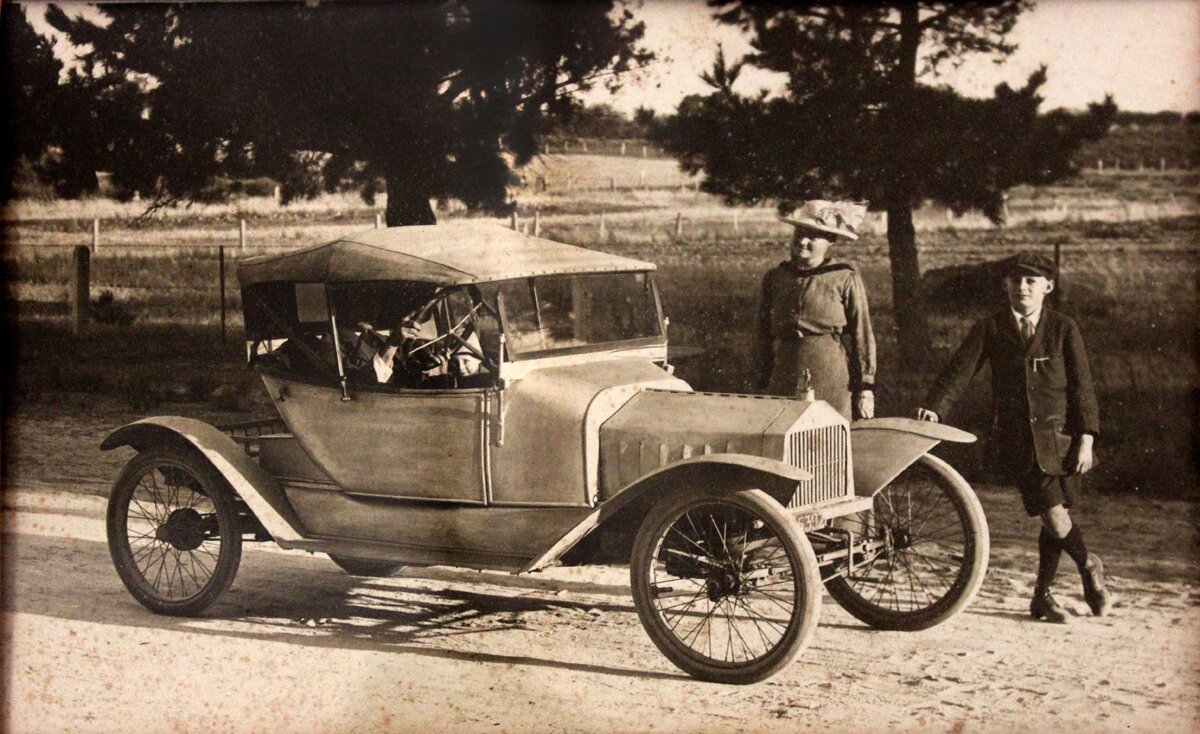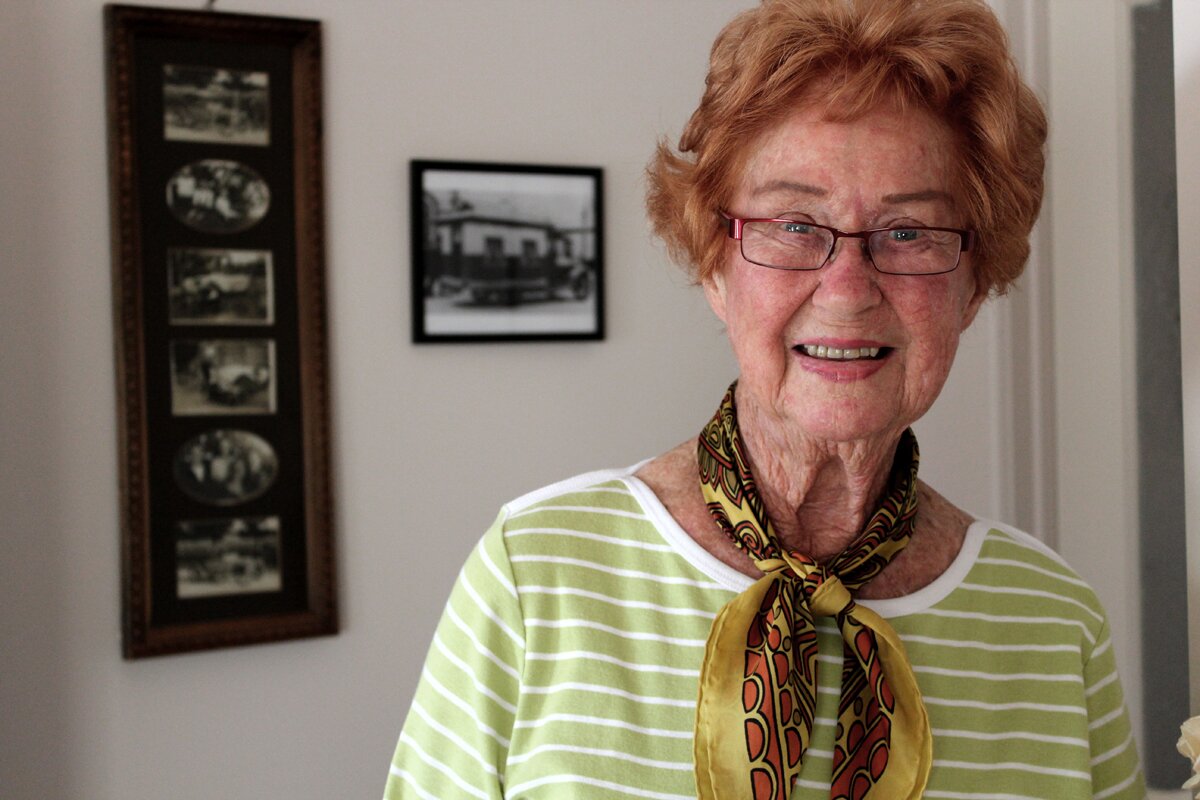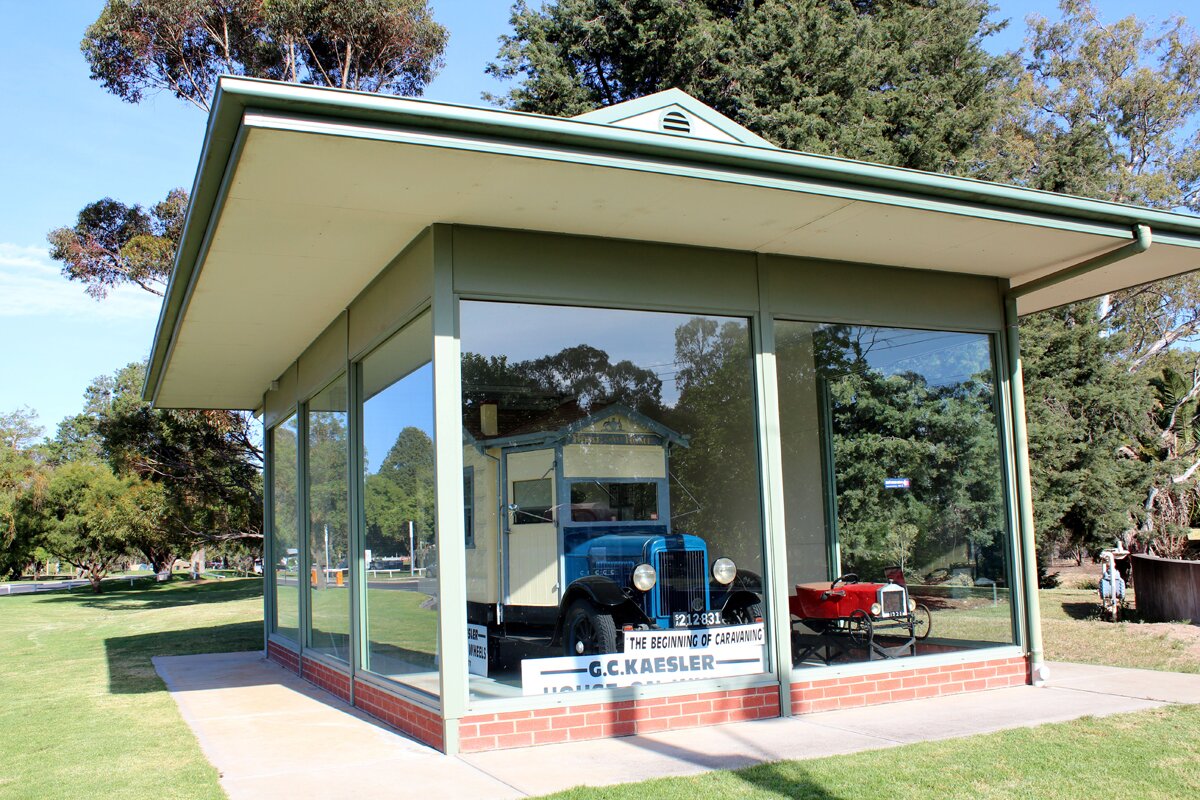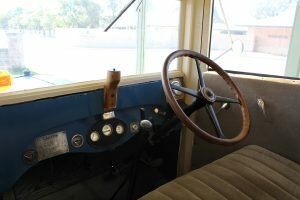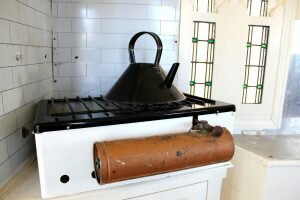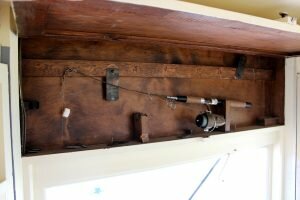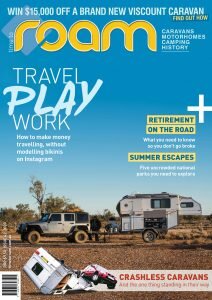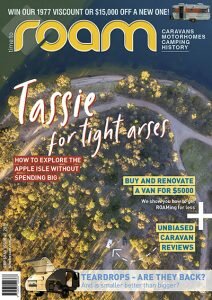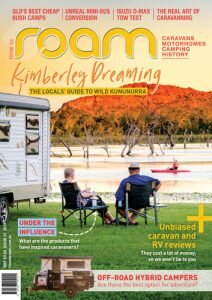Gerhard Kaesler is credited for having built Australia’s first two motorhomes, both so rare and unique, they are kept behind glass in the South Australian towns of Goolwa and Nuriootpa.
The closest living link to the pioneer inventor, Kaesler’s only daughter Hazel, shared his remarkable story in a rare interview with RUTH MORRIS.
“Take it all in, Hazel. Think about what you are looking at and learn from it”.
These were the wise words from a man who was one of the first Australians to take his children out of school and travel the uncharted country roads of the 1920s.
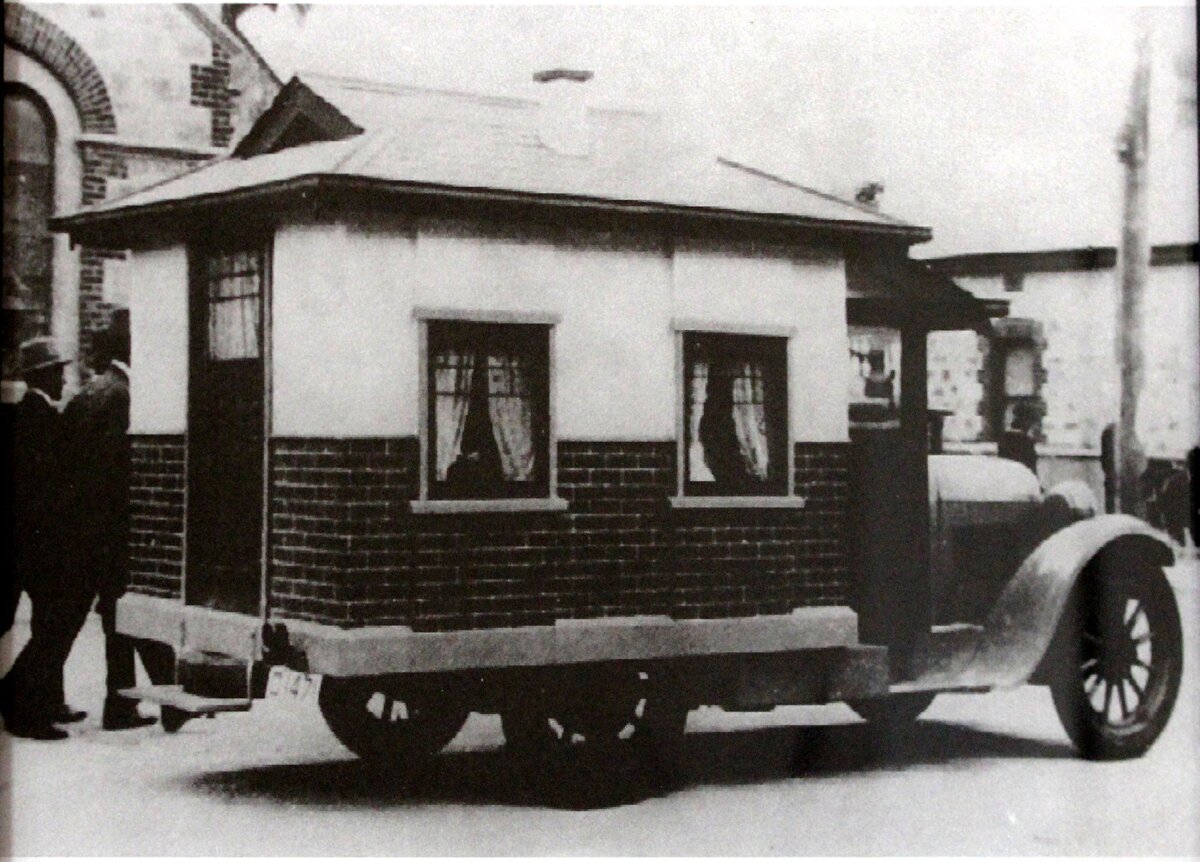
Unhappy with the limited range of holiday accommodation available at the time, Barossa valley father of four Gerhard ‘Pop’ Kaesler turned his inventive mind to creating the ultimate travel solution.
Hazel recalls an extraordinary time in her childhood when her father created of the first mobile home ever seen in Australia.
“Pop not only pioneered the educational holiday that is emulated today by thousands of Australians, but invented the means by which to achieve it,” Hazel says.
Young Gerhard had spent only five years at a German speaking school and spoke little English, having been born in Tanunda in 1885 from German parents. At age eleven he briefly worked as a Wheelwright and Undertaker, teaching himself English from a dictionary, before setting up his own business as a coach builder and blacksmith in Nuriootpa.
He soon gained a reputation as the local “Mr Fixit” mending anything needing repairs, usually for free.He built his own machinery to cut steel, his own forge, and a table with turned metal legs.
Hazel says her father was a born inventor and she grew up watching him tinkering and building things. One of her earliest memories was of Pop presenting his children with a hand-built car quite unlike any other. It was driven with a set of bicycle pedals, had rubber tyres, gears and a car horn.
“My father was an extraordinarily clever man. He was one in a million. It showed in everything he built.” Hazel recalls with pride. His inventive creativity ensured his family had electricity before everyone in the Barossa, created from his own water-driven generator. Kaesler’s other engineering feats included an early box camera, a precision lathe, and machines for utilizing seeds and skins of grapes, a by-product from the wine industry.
Kaesler created a water-powered washing machine made from a wine cask, with a rotating agitator. His wife, Mary also had the privilege of using a rotary clothesline, some two decades before they went into commercial production in Adelaide. A fellow called Lance Hill bought the metre high wooden prototype model from Pop and, as they says, the rest is history.
In 1929 Pop built the first motorhome, which he called “Home From Home”, on the chassis of a 1924 Dodge Tourer. The result most closely resembled a very small house that had had a 1920s car drive partly through it. Sash windows with curtains, a pitched roof and brick cladding gave the very literal impression of a house on wheels. The interior was fitted out with some basic camping equipment and beds.
That Easter, the Kaesler family set out on a pioneering holiday, drawing much attention to themselves from onlookers who had never before seen the likes of such a contraption.
The family continued to Goolwa, on the Fleurieu Peninsula, where their “Home From Home” caught the attention of no less than the mayor. He was so enchanted by what he saw, he wanted to purchase it on the spot. Following much bartering, a deal was sealed and the mayor organised for the Kaesler family and their belongings to be transported back to Nuriootpa by train. The very first of its kind, the 1929 “Home From Home” can still be viewed in Goolwa today, housed in a glass garage.
In early 1931, to celebrate his Silver wedding anniversary, Popset about building another mobile home, which he intended to use to transport and accommodate his family on an epic journey. There was a deadline to meet of September that year, which included sourcing a new vehicle up to the task. This time a bigger one-tonne truck was selected and Pop stripped away the fixtures, lengthened the chassis and replaced the wheels with more robust ones.
Because petrol was hard to obtain, an extra tank was fitted. Hazel remembers packing lemons from their tree, four loaves of bread and bottled produce, stored in the pitched roof of the motor home. With no refrigeration fresh food had to be sourced on the way. A long, shallow cupboard above the driver’s seat housed a fishing rod and rifle to provide meat and fish.
The mobile home carried its own twelve-gallon water supply in tanks under the floor, a built-in first-aid box, shellite-fuelled cooking facilities, a double sofa bed and bunk beds for the children. The folding divan/sofa bed was yet another design of Pop’s. His attention to detail included a commode with a lid disguised as a chessboard.
The new mobile home was named “The Cottage” and came replete with a tiled pitched roof, chimney, stained-glass lead light windows, curtains and an imitation stone finish.
The Kaesler family embarked upon the kind of adventure that is now rarely possible, as technological devices and well-mapped roads these days make travelling feel like there is no place on earth that has not already been seen by people.
For Hazel, it was a life-changing experience. She was only ten at the time, and her innocent eyes were opened to what lay beyond the small town limits of 1920s Nuriootpa. Her brother Gordon, aged 14, slept along the drivers seat, whilst seven year-old Eric and Hazel had the bunk bed. The eldest brother Victor, 24, had to stay at home to look after the family business.
- Drivers compartment of The Cottage
- The kitchen, which still looks pretty serviceable.
- Fishing rod & rifle were kept above the windscreen for easy access
Hazel says they headed off as planned, travelling due north to Jamestown; east to Broken Hill where they saw mining in action, then on to Bourke and Goondiwindi. In these outback regions of NSW and QLD there were many gates to go through, so daily progress was anything but rapid. With no caravan parks, overnight stops were often spent at local showgrounds.
Hazel remembers the trip from Brisbane to Sydney involving at least seven ferry crossings. Arriving in Sydney the family observed the Sydney Harbour Bridge under construction, while in Canberra, Prime Minister Scullin made a personal inspection of the mobile home parked outside the recently opened Parliament House. The PM picnicked with the family on the lawns, enjoying fresh pineapple and bananas.
Pop carried on inventing well into his eighties, and in 1987 died at the grand age of 102. His most famous credited invention, The Cottage, remains on display in a giant glass case opposite the Nuriootpa Caravan Park entrance, along with the children’s car from 1921.
The Cottage is still driven occasionally in parades by Hazel’s son. Hazel is now a sprightly and energetic ninety three year old, and after an esteemed singing career with the ABC, which included performances for the Queen, she still performs at Nuriootpa community gatherings.
Love this? Read about more vintage RVs and caravans here
- Breaking – Kirribilli House to be replaced with caravan - August 24, 2018
- ROAM Issue 33 – Read It Online - May 25, 2018
- Australia’s Best Bike Tracks Near Great Campsites - December 6, 2017
- Caravan Club Donates $1000 to RACQ Life Flight - December 5, 2017
- Motorhome Review – Horizon Melaleuca Appeal - October 21, 2017
- Winton’s Dunny Derby Run and Won - September 28, 2017
- Motorhome Review – Sunliner Habitat - September 14, 2017
- Top 5 Nomad Towing Mistakes - August 25, 2017
- Camper Trailer Review – Blue Tongue Overland XF 2 - August 17, 2017
- Video – Mal Leyland visits Eden and Pambula - August 1, 2017

